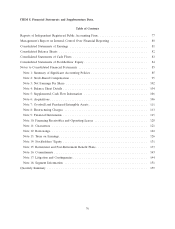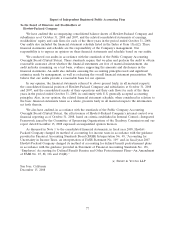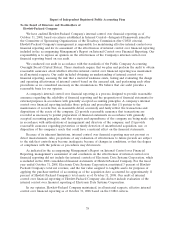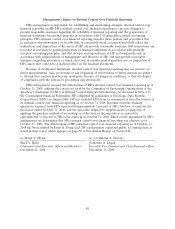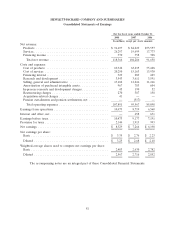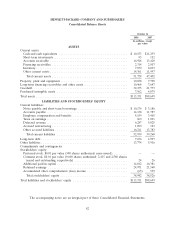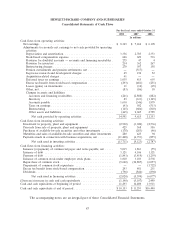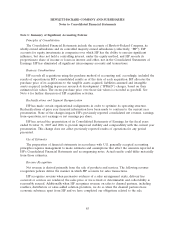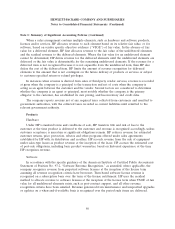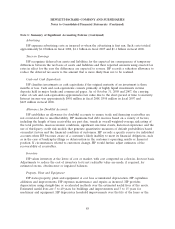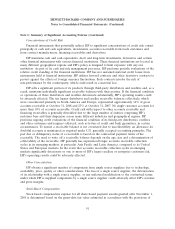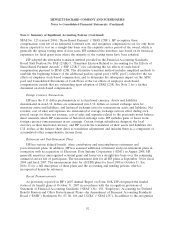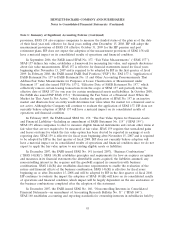HP 2008 Annual Report Download - page 92
Download and view the complete annual report
Please find page 92 of the 2008 HP annual report below. You can navigate through the pages in the report by either clicking on the pages listed below, or by using the keyword search tool below to find specific information within the annual report.HEWLETT-PACKARD COMPANY AND SUBSIDIARIES
Notes to Consolidated Financial Statements (Continued)
Note 1: Summary of Significant Accounting Policies (Continued)
When a sales arrangement contains multiple elements, such as hardware and software products,
licenses and/or services, HP allocates revenue to each element based on its relative fair value, or for
software, based on vendor specific objective evidence (‘‘VSOE’’) of fair value. In the absence of fair
value for a delivered element, HP first allocates revenue to the fair value of the undelivered elements
and the residual revenue to the delivered elements. Where the fair value for an undelivered element
cannot be determined, HP defers revenue for the delivered elements until the undelivered elements are
delivered or the fair value is determinable for the remaining undelivered elements. If the revenue for a
delivered item is not recognized because it is not separable from the undelivered item, then HP also
defers the cost of the delivered item. HP limits the amount of revenue recognition for delivered
elements to the amount that is not contingent on the future delivery of products or services or subject
to customer-specified return or refund privileges.
In instances when revenue is derived from sales of third-party vendor services, revenue is recorded
at gross when the company is a principal to the transaction and net of costs when the company is
acting as an agent between the customer and the vendor. Several factors are considered to determine
whether the company is an agent or principal, most notably whether the company is the primary
obligator to the customer, has established its own pricing, and has inventory and credit risks.
The company reports revenue net of any required taxes collected from customers and remitted to
government authorities, with the collected taxes recorded as current liabilities until remitted to the
relevant government authority.
Products
Hardware
Under HP’s standard terms and conditions of sale, HP transfers title and risk of loss to the
customer at the time product is delivered to the customer and revenue is recognized accordingly, unless
customer acceptance is uncertain or significant obligations remain. HP reduces revenue for estimated
customer returns, price protection, rebates and other programs offered under sales agreements
established by HP with its distributors and resellers. HP records revenue from the sale of equipment
under sales-type leases as product revenue at the inception of the lease. HP accrues the estimated cost
of post-sale obligations, including basic product warranties, based on historical experience at the time
HP recognizes revenue.
Software
In accordance with the specific guidance of the American Institute of Certified Public Accountants
Statement of Position No. 97-2, ‘‘Software Revenue Recognition,’’ as amended, where applicable, the
company recognizes revenue from perpetual software licenses at the inception of the license term
assuming all revenue recognition criteria have been met. Term-based software license revenue is
recognized on a subscription basis over the term of the license entitlement. HP uses the residual
method to allocate revenue to software licenses at the inception of the license term when VSOE of fair
value for all undelivered elements exists, such as post-contract support, and all other revenue
recognition criteria have been satisfied. Revenue generated from maintenance and unspecified upgrades
or updates on a when-and-if-available basis is recognized over the period such items are delivered.
86


